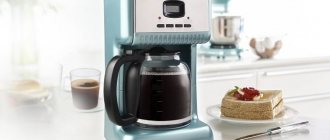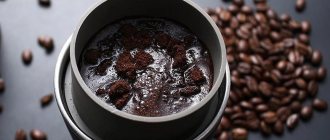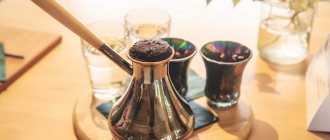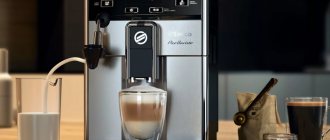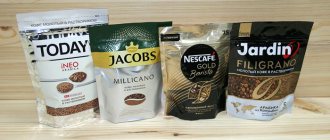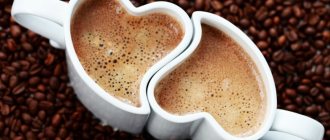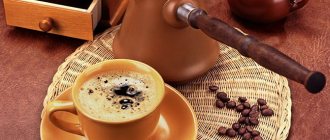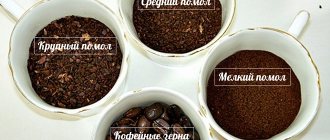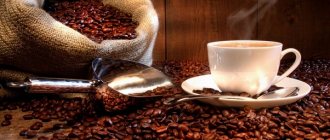In modern times, it is absolutely impossible to imagine a professional barista without a set of all kinds of additives, or, to be more precise, toppings.
It should be explained what toppings are and what types they can be. This term usually refers to various additives that add additional taste and appearance to a dessert or drink.
If translated literally, the topping is a viscous and incredibly sweet syrup. Let's take the first option as a basis, as a variety of additives. So, they can be of the following types:
- chocolate sprinkles;
- various crumbs, such as waffle crumbs;
- nuts or candied fruits;
- pieces of chocolate or biscuits, etc.
Main types of syrups
However, syrups remain the most popular type of topping to this day. They are able to reveal a wide range of tastes and aromas of the drink.
There are many flavors and types, namely:
- Nuts (hazelnuts, almonds, walnuts, pine, pistachio)
- Dessert (chocolate, vanilla, caramel, condensed milk, etc.)
- Fruit (strawberries, cherries, raspberries, currants, etc.)
- Based on spices (cinnamon, ginger, cloves, etc.)
Advice! Try to carefully choose syrups for your cafe, as some of them add too many “chemicals”.
It is important to correctly maintain the balance of aesthetics, taste and composition.
Syrups for oxygen cocktails: recipe – Recipes
The oxygen cocktail is popular among adults and children. Its basis is juices and various syrups for cocktails, which are used instead of gelatin and chemicals to stabilize the foam. You can prepare them yourself using berries, fruits and herbal infusions.
Syrups for cocktails have gelling properties and are added to oxygen drinks to stabilize the foam.
Photo: Getty
Sweet syrups are needed to create a stable foam. Gelatin is not recommended because the bubbles only last about 20 minutes. Syrups are made from berries and sugar. It should not be confused with licorice root, which is also added to the drink to create foam.
Preparation:
- Pour blackcurrant juice into a small saucepan and place in a water bath.
- Add sugar. You can change the ratio from 1:0.5 to 1:1.5.
- Preheat to 80-90°C. Stir constantly and do not let the mixture boil.
- Cook for about 30 minutes and leave to cool. Cooling may take 30-40 minutes. The required syrup temperature for preparing a cocktail is 25-35°C.
This syrup holds the foam for up to 60 minutes! White and red currants have almost the same ability.
To prepare a cocktail, take the resulting 220 ml of syrup and add to it any juices, tonic herbal teas or herbal infusions in a total volume of 700 ml. Pour in 80ml of licorice syrup, which will help create a foam, and stir all ingredients for 6 minutes. Connect oxygen. The cocktail is ready!
You can fill the drink with air bubbles using oxygen devices: a cocktail mixer, a mixer and a tube with an aerator, which is connected to an oxygen source.
Syrups for oxygen cocktails
Syrups not only have gelling properties, they contain vitamins and microelements that are beneficial for the body. Therefore, they are made based on various herbs and fruits.
Varieties:
- fruit;
- berry;
- berries and fruits with milk;
- based on herbs that help with colds and viruses;
- based on herbs for weight loss.
They are boiled in a water bath for 30 minutes, mixing the liquid base with sugar 1:1 or 1:1.5. The base can be grass, which is poured with boiling water and infused for 3-4 hours. If there is no juice, then fruits are cut, mixed with water 50% to 50% and 100% sugar is added. Everything is boiled and strained.
An oxygen cocktail prepared at home does not contain chemicals and has a healing and tonic effect. There are no contraindications for children. In addition, they like to take vitamins in this form.
Ribbon
Ribbon frill 2-layer, h=4.5 cm, 50 m/roll. transparent with PINK stripe /1/ - To order Article: 24355*B
Ribbon frill 2-layer, h=4.5 cm, 50 m/roll. transparent with RED stripe /1/ - To order Article: 24355*D
Ribbon frill 2-layer, h=4.5 cm, 50 m/roll. transparent with GOLD stripe /1/ - To order Article: 24355*I
Sugar and sugar syrup
Many cocktails benefit from sweetening, but granulated sugar does not dissolve well in cold liquids, especially alcohol.
Hence, pre-dissolved sugar syrup (also known as “simple syrup”) is used for this. "Gomme sirop" or "gummi syrup" is a sugar syrup infused with gum arabic, the crystallized sap of the acacia tree, which gives drinks a flavorful, smooth feel.
Along with ethyl alcohol, sugar is the most commonly used ingredient in cocktails.
Sugar syrup is one of the simplest, yet most misunderstood and complex products used by bartenders.
Further, the article will explain the different types of sugar, density and methods of preparing sugar syrup.
There are a large number of bars using low sugar cocktails, but here we will be exploring the different types of "unsugared sugar syrups" made with artificial sweeteners.
Degrees of sweetness (Brix). The balance between sweet and sour is critical to most cocktails, and making balanced cocktails can be easier when using a sugar syrup with a known and consistent sweetness.
The sweetness of a liquid is measured on a scale called brix. At a temperature of 20°C, 1.0º Brix is equal to 1 gram of saccharin in a solution of 100 grams of water and sugar.
Sugar syrups are usually made using two recipes: one part sugar to one part water (1:1) and two parts sugar to one part water (2:1). The first, 1:1, is the most common type of syrup used in American bars and can be made by mixing sugar and room temperature water in an airtight container. That's why it's called "simple syrup."
In British and other European bars, a 2:1 sugar syrup is known as "rich syrup". It is more common and is used in all Difford's Guide recipes. 2:1 Sugar Syrup is the same sweetness as most commercial sugar syrups.
European bars usually buy bottled syrups rather than making them themselves. The willingness to buy rather than make is also driven by the fact that making a 2:1 syrup requires heating and stirring.
I find that 2:1 syrup is superior to 1:1 and homemade is better than commercially manufactured products, which tend to have lower viscosity - possibly due to the heat levels used in their production.
Using a 1:1 sugar syrup adds additional, unwanted dilution to the drink compared to a 2:1 syrup (usually about 5-8% depending on the recipe). This is a small percentage, but it is worth considering.
If desired, in a particular beverage, the dilution can be increased in a controlled manner by adding a measured amount of chilled water. If you are concerned about the sugar syrup being over-diluted due to bad ice, you should also be concerned about the amount of water in your sugar syrup.
When making sugar syrup, some people measure by weight (eg 2 kg sugar to 1 kg water) and others measure by volume (eg 2 cups sugar to 1 cup water).
Measuring by weight results in a sweeter syrup than measuring by volume. The 2:1 sugar syrup (sucrose), measured by volume, has a 65.1° Brix, similar to that of the leading brand of commercial cane sugar syrup.
The differing levels of sweetness between the most commonly used (sucrose) sugar syrups are shown below:
- Homemade sugar syrup 2 kg. sugar per 1 kg. water by weight = 66.7º Brix.
- Homemade Sugar Syrup 2 cups sugar to 1 cup water by volume = 65.1º Brix.
- Monin Pure Cane Sugar Syrups (855 g sugar per liter) = 65.0º Brix.
- Monin Gomme Sugar Syrup (835 g sugar per liter) = 64.7º Brix.
- Homemade sugar syrup 1kg. sugar per 1 kg. water by weight = 50.0º Brix.
- Homemade Sugar Syrup 1 cup sugar to 1 cup water by volume = 48.0º Brix.
- To balance citrus fruits such as lemon and lime juice, a strict rule should be followed: use 15 ml/0.5 oz 65.0º Brix syrup (2:1) per 30 ml/1 oz citrus juice. If you are using 48º Brix (1:1) syrup, you will need approximately twice as much syrup, or more accurately, a citrus volume of syrup.
Different types of sugar
The oldest standard of cane sugar, like the ones we use in tea and coffee, is sucrose.
When it is heated with water, it is broken down into fructose and glucose in a process called hydrolysis to produce what is called invert sugar.
Bakers prefer invert sugar because products made with it tend to retain more moisture and are less prone to crystallization.
But what's good in the kitchen isn't good behind the bar.
Sucrose-based sugar syrup is the most viscous, but if it is overheated during the syrup-making process, some of this viscosity will be lost as the sucrose hydrolyzes to the less viscous fructose and glucose.
Fructose is the least viscous sugar with glucose being slightly more viscous than fructose, but sucrose is almost twice as viscous as glucose.
Although hydrolysis of sucrose into fructose and glucose results in a decrease in viscosity, it has the opposite effect on sweetness, since sucrose and glucose are 50/50 about 25% sweeter than 100% sucrose syrup (glucose is about 75% of the sweetness of sucrose, but fructose is almost twice as sweet as sucrose.)
How to make sugar syrup
Buy branded sugar syrup or make your own sugar syrup.
We recommend preparing a syrup from 2 parts sugar and 1 part water (2:1) as follows.
Granulated white sugar is most often used, but it is also worth considering using dark sugar to make the syrup in dark spirit cocktails such as the Old-Fashioned.
- 1. Pour one cup of filtered or any clean water into a clean saucepan.
- 2. Add one cup (same size as water) granulated sugar (dissolves easier than lump sugar) and stir with a clean metal spoon (not wooden).
- 3. Please simmer on low heat and keep stirring until all the sugar is dissolved.
- 4. Gradually add the second cup of sugar to the pan, stirring as you add the sugar.
- 5. Heating helps sugar dissolve in water, but also has a negative effect on changing the physical properties of sugar.
- The more it heats up, the more sucrose is broken down into the less viscous but sweeter glucose and fructose.
- Therefore, do not let the water boil and only heat gently until it dissolves the sugar (the temperature should be low enough to be able to press onto the surface of the pan).
- 6. Let the syrup cool and pour into a sterile empty bottle.
- Ideally, you should carefully strain the syrup into the bottle to remove any undissolved crystals that could contribute to crystallization.
- 7. If stored in the refrigerator, this mixture will keep for six months.
After making the syrup, you will notice that 1 cup of water and 2 cups of sugar does not produce the same amount of sugar syrup. Surprisingly, this results in about 1.5 cups of syrup.
The reason for this is that sugar dissolves in water, taking up the space between the water molecules.
Gomme or gummi syrup
For me, this syrup is the king of sugar syrups, a reaffirmation of 2:1 sugar syrup, but with increased viscosity for smoother cocktails, from Daiquiri to Old Fashioned.
Most of the companies that make this syrup commercially are French, so it is called "gòmme sîrop", but in English it is a gum/gum simple syrup.
Like most bartenders, I tend to mix French and English names into gòmme syrup.
Gomme syrop was widely used in the mid-1800s, and E. Ricket and C. Thomas' 1871 Gentlman's Table Guide includes the following recipes: “Dissolve 1 lb. of the best white gum arabic in 1.5 pints of water, nearly boiling; 3 pounds white sugar or candy, melt and clear it, half a pint of cold water, add gomme solution and cook for two minutes. This gomme is designed for cocktails.
Gum Arabic - The necessary ingredients for this wonderful syrup, also known as Arabian meska, are made from the sap of two branches of the acacia tree: Senegalia (Acacia) from Senegal and Vachelia Arabian (Acacia).
Gum arabic is used in the food industry as a stabilizer and has the number E414.
It is also used in cosmetics, paints and textiles and is the adhesive used on postage stamps. Artists will be familiar with gum arabic as it is used as a base for watercolors.
How to make gummi syrup
When you first try to make gummi syrup, you will understand why its use has decreased.
Although it only takes a few minutes to prepare 2:1 sugar syrup, simply making a paste from gum arabic powder takes at least 10 minutes.
- 1. Start by measuring 1 cup of filtered or mineral water and 1/4 cup of gum arabic powder.
- 2. Like cornmeal or cornstarch, gum arabic forms clumps when it comes into contact with water and is best mixed with room temperature water first, rather than hot.
- Place gum arabic in a bowl and add a small amount of water from a mug. Using the back of a spoon, mix the gum arabic and water into a paste, gradually adding the remaining water and then into a straw-yellow thick solution with a foamy head. This process takes about 5 to 10 minutes but feels like an eternity, so turn on the radio or music before you begin.
- 3. Pour your gum arabic and water solution into a saucepan placed over very low heat and add one cup of powdered sugar (not granulated). Stir the sugar into the solution until all the sugar has dissolved.
- 4. Gradually add a second cup of powdered sugar to the pan, stirring as you add sugar.
- 5. Heating helps sugar dissolve in water, but has a negative effect on changing the physical properties of sugar. So don't let the water get close to boiling and only heat gently for as long as it takes to dissolve the sugar (the temperature should be low enough to be able to hold the bowl).
- 6. Close and let the syrup cool. You will get a thick, straw-yellow syrup with a white, foamy top. Cover and leave for 24 hours.
- 7. Pour into a sterile container through a fine sieve and leave to settle and clear for 24 hours.
- Separate your gummi syrup from any sediment and foamy top.
- 8. Place in a sealed, sterile bottle and refrigerate, where the syrup will keep for six months.
Alternative sugar-free sweeteners
You can make syrups as described above or using a sweetener instead of sugar.
I have used several sweeteners and can recommend XyloBrit.
XyloBrit (xylitol) 1 scoop = 1 scoop sugar. Dissolves like sugar and heats to form a 2:1 syrup. Produces crystal clear liquid that does not foam and then shakes. Comment: Good taste, close to sugar with a slightly more subtle taste. Best aftertaste of any sweetener I've tried, but not as good as sugar.
4/5 Green Canderel (Stevia) 1 spoon = 1 sugar. It fizzes when dissolved in water, but dissolves easily without the need for heat. The result is a clear liqueur with a fine viscosity that foams when shaken. Comment: Not sweet enough. An alarming hissing sound after shaking. Unpleasant taste.
2/5 Silver Spoon Truvia (Stevia) 1/3 spoon = 1 spoon of sugar. It is more difficult to dissolve in water than Green Canderel and benefits from the fact that it can be heated. The result is a transparent liquid with a light straw-yellow tint, similar to sugar syrup. Foams when shaken. Comment: The structure of a cocktail made with this syrup breaks down very quickly to form a thin foam on top of the cocktail. Good taste, but disappointing aftertaste. 3/5
Sugar, evil, good, nasty According to Jane Ryan's definition
Sugar is called evil. Blamed for the sharp rise in obesity, not to mention the host of other health complications directly linked to excessive consumption of this sweet product will force us to give up the addictive white crystals.
First of all, this article talks about sucrose, or table sugar, which is a crystalline carbohydrate, a quick source of energy that also releases dopamine.
Increasingly, scientists are comparing sugar to drugs that create addiction through this release of dopamine, similar to cocaine and nicotine.
Sugar "evil, good and nasty" was the theme of a lecture at Tales of the cocktails 2014, where FIX's George van Til, Sweet Poison author David Gillespie, Times magazine editor Jeffrey Kluger and bartender Ben Carloto and Spirit Creation head Claire Smith Belvedere discussed the necessary "evil" of this substance.
“Let's start with the serious stuff; Mary Poppins was a drug dealer,” joked Claire Smith. It sounds a little harsh, but there is some truth to this broad statement. Sugar is one of the most addictive substances in the world. Poor Jane and Michael didn't stand a chance. And if today's media is to be believed, they likely died early from a combination of diabetes, cancer and obesity. Sugar consumption in the 21st century is undoubtedly one of the main causes of today's obesity epidemic.
Only recently, the World Health Organization halved the recommended daily intake of added sugar from 12 teaspoons per day to just 6. For a substance so popular around the world, this is difficult.
We love sugar, as Claire continued that most of our affections and their manifestations are related to sugar. Sugar pie, honey bun. The sugar crush has been going on for hundreds of years, and there's a reason for it. When we consume sugar, dopamine is released, which stimulates processes in our brain, just like other substances do.
In fact, the left side of the brain may be happier on sugar than on cocaine.
Even the most inexperienced person in terms of nutrition knows that eating only chocolate bars or cookies is far from healthy. “The more sinister side of this debate is not how much candy we eat, but how much sugar we unwittingly eat. "Yoghurts, fruit juices, breads, ketchups - all known food groups contain increasing amounts of hidden sugar," Claire said.
What's even more alarming is that the sugar industry is trying to hide this from us. In 1989, the Sugar Association lobbied the US government to protect what it called "confidential information." This meant she didn't have to disclose the types or amounts of added sugars. According to Euromonitor, in 2012, 80% of American food products contained added sugar that did not need to be labeled.
A very important point to understand is that sugar or sucrose is a combination of two monosaccharides: a monosaccharide of 50% fructose and 50% glucose. And it's fructose that we should fear most. We need glucose. Every cell in our body needs to function. Even plants needed it. This is the only fuel our brain needs.
As for fructose, there is no such need.
“Glucose can and is used by every cell in our body for life. This is vital. For this reason we can make it out of anything, any carbohydrate we eat we can turn into glucose. We are very well suited for this. Elements of fructose that we cannot use at all, only the liver can process them,” said David Gillespie.
Our liver can convert fructose into fat at lightning speed. Moreover, it does this as a priority job long before it starts processing alcohol or glucose; before it does anything, it converts fructose into fat.
Consequently, the obesity rate in the United States in 1905 is rising, with one in 100 people being obese. Now he is approaching 30 out of 100 and is only progressing.
David's first point was that sugar consumption has increased from 2 to 45 teaspoons per day since 1822.
As the industry uses sugar as a flavor enhancer, as an ingredient in many of our drinks, can bartenders make a difference about this? - says Ben Carlotto.
Sweet cocktails
“What's sugar-free in our bar?” asks Ben. Mainly, sugar helps us enhance texture and depth.
“Bartenders need to understand that sugar is not just an important element in cocktails, but something that goes along with it.
Why do we use sugar?
“As bartenders, we fight bitterness and acidity,” Ben explained. There are hundreds of different options on the current bitters market, all of which bring a great amount of aromas and flavor profile to our cocktails.
Should there be bitterness?
What happens if we remove this bitterness?
As Ben states, we wouldn't have to balance it with sugar. “What if we look at creating tinctures?
The tinctures are mostly bitter, without the bitter element. If we had an old fashioned without the bitter element, using bitters instead of bitters, we wouldn't have to add as much sugar.
Alcohol is a sponge. Putting alcohol in a container with botanicals means it will extract the flavor from them,” Ben said.
However, there are a few basic rules for creating a tincture to replace bitters. Be careful with ABV, especially when using botanicals of a lighter nature such as tea, jasmine or rose.
A high-quality liqueur will burn such a botanical product and preserve it, rather it will take on automation and flavor. Around 45-50% is recommended, while a dense botanical such as cinnamon, clove or licorice root requires a high ABV level, up to 80% ABV. “Each plant has its own needs, so patience and systematic experimentation are needed.
Use a neutral based alcohol with the highest ABV possible. Some plants need to be crushed before maceration. It is important not to over-macerate. Alcohol will definitely damage the botany over a long period of time. So I try every day and then filter when I think it’s right,” Ben said. “I think tincture is the way forward, especially in helping us avoid adding sugar to combat that bitterness.”
Fighting acid is not easy without using some type of sugar substitute. It's possible to play with malic and/or tartalic acids and introduce flavoring with another medium such as dried botanicals, but fats can neutralize the heat of the acid.
Going back to the history books of the old drinks we don't make anymore, many contain fats like milk or the classic egg yolk, and even these days avocado is making its debut on menus around the world. Using fat to balance the acid completely eliminates the need for sugar.
As Ben said, our bodies can handle fat. It can't handle fructose, so we need to find ways to deal with our bitterness and acids.
Sweeteners present their own gambit of problems.
Saccharin is an option, but public opinion is divided on the taste, with many believing that saccharin tastes like aluminum foil. The attempt to create a delicious cocktail with sweetened and woody notes is striking.
The associated difficulties with residual flavors are not the only problems, there is also a loss of texture and a huge increase in sweetness levels.
But sugar can also help avoid excess fructose. The beloved agave is 90% fructose, which is much more deadly than sugar. Giulio Bermejo, who invented the Tommy Margarita with agave syrup, did it to eliminate triple sec. Sweetening the drink brought tequila to the forefront.
“I want to take it one step further because white sugar has no taste. It's just a sweetener. If we consider the use of sugar instead of agave in a margarita, the tequila is even more pronounced. “halving the amount of fructose in the drink and making the tequila shine,” Ben said.
Looking around, you realize how dependent this industry is on sugar. For a liqueur to be called this, it must contain 100 grams of sugar in each liter. Crème de pich must have 300 grams per liter to be called, so white crème cassis must have at least 400 grams.
Ben advises always creating homemade liqueurs to control what's going on and come up with variations. Crème de cassis is usually replaced with pomegranate juice, as it still has the sour and tart properties.
Another tip he presented was to use fruit peel rather than pulp. This cuts out most of the fructose and prevents crystallization, but retains most of the fruit flavor. Finally, Ben explained that invert sugar syrup is perceived as sweeter and therefore consumed less. You can invert sugar in one of two ways. The easiest way is to add acid, simply adding 10ml lemon juice to 1 liter of syrup will invert it.
“Rethink your cocktails, break them down and revive them with an effective syrup,” Ben said.
Sugar: Evil
David explained what sugar does when it enters the body. Obesity may be the least of our worries.
Teeth First of all, it destroys the teeth. In a population of bacteria exposed to sugar, they have 24 cavities per 100; in populations not exposed to sugar, they have 4 cavities per 100.
The difference is in fructose, the bacteria in the mouth that causes tooth decay need fructose. In the absence of fructose, bacteria cannot produce decay. Thus the early warning system is effective. When teeth begin to suffer, this is an early warning that all other problems are beginning too.
Stomach Fructose has the unique ability to widen the gaps in the intestinal mucosa and allow endotoxins into our bloodstream.
A unique ability, like everything else we consume, involves alcohol. Except we don't consume alcohol at the level that we consume sugar.
If the average person's alcohol consumption level was equivalent to 20 standard cocktails per day.
Not just one day, but every day of their life, and this is clearly more damage to the body. When endotoxins enter the bloodstream, people become intolerant. Gluten intolerance, lactose intolerance, all of these problems come back to the same problem - damage to the intestinal wall.
Fatty Liver Once fructose enters our bloodstream it goes to the liver and is processed into fat. The liver then stores this fat and creates a condition called fatty liver.
Currently, more than 33% of US adults and more than 15% of children over 12 years of age have fatty liver disease. It is asymptomatic, meaning you won't know you have it until something goes wrong.
This is fatty liver that eventually turns into cirrhosis. It's called non-alcoholic fatty liver disease to distinguish it from alcoholic fatty liver disease, which affects far fewer people than non-alcoholic fatty liver disease. According to experts, more than a third of the population suffers from this.
Type II Diabetes The next thing that happens is that we become resistant to the hormone insulin, which is designed to remove glucose from our blood.
Remember that we are a machine that runs on glucose, glucose is used for energy as we get it from our bloodstream and into our cells it is used for the hormone insulin. The irony is that the accumulation of fructose around the liver destroys our ability to do just that and leaves glucose in our blood - this is called insulin resistance.
Insulin resistant with a fairly high level of glucose in the blood, and as a consequence the development of type 2 diabetes. A third of the US population will have type 2 diabetes by 2021. This is a serious problem.
Obesity Fructose interferes with the appetite-controlling hormone insulin, causing you to steadily gain weight.
This infinitely increases the amount of food you can eat, not by much, by about 1 biscuit per day, but it is enough to suppress appetite control so that you can gain weight on a consistent basis throughout your life.
Kidneys When we convert fructose into fat we create a by-product called uric acid, it builds up in our blood but we are good at getting rid of it.
The only problem is that it has to pass through our kidneys.
When we overload them we destroy the kidneys, chronic kidney disease has doubled in the last 10 years and the only cure is a new kidney transplant.
Another consequence of uric acid is gout, accompanied by intense arthritis in the legs and lower joints of the body. Gout did not exist 30 years ago; it was completely eradicated. Now it affects huge sections of the population.
Erectile dysfunction Sugar is essentially the opposite of Viagra.
Viagra increases the production of nitric oxide. This means less blood reaches vital organs and increases blood pressure.
The same thing happens when other arteries in the body dilate, causing high blood pressure.
Nitric oxide causes your arteries to dilate, which lowers your blood pressure, when you stop producing it, your arteries become constricted and your blood pressure rises.
Heart Disease All that fat that accumulates around the liver not only stays in the liver, but also enters the bloodstream. This fat oxidizes and ends in heart failure.
Depression Occurs because sugar is addictive.
Coconut is not addictive, anyone who has eaten raw coconut will tell you that it is just as addictive as raw beans. This sugary chocolate is addictive. This substance has the same addictive potential as caffeine and cocaine.
A side effect is what is called serotonin and dopamine balance in the brain, where over time, as you consume an addictive substance, be it sugar, sex, or gambling, you increase the number of dopamine receptors in the brain and decrease the number of serotonin receptors.
Serotonin is what prevents us from becoming depressed.
Alzheimer's Now many researchers call it type III diabetes.
Alzheimer's is now definitively linked to type II diabetes.
“People say I don't eat 45 teaspoons of sugar a day, I don't know who you're talking about, but that's not me. I don't put sugar in my tea or coffee, I don't put sugar in my cereal. If you eat a health foundation-approved breakfast cereal and a glass of juice every morning, you'll have a pound of sugar consumption by the end of the week.
You haven't added an ounce, but it's there, and the reason is because the food industry knows exactly what I just told you. If they could add nicotine to breakfast cereals, they would,” says David.
Good "Sugar is here to stay, and we need to equip people to think critically about what's in their mouths and in the mouths of those they love," Georgia said, pointing out that what we really need is sugar. It is our body's preferred fuel, the only problem is that we consume too much.
“Natural sugar, which gives fruits, some vegetables and milk their sweet taste, is perfectly healthy. It's not very good sugar, sweeteners added during processing and cooking." She further emphasized that we all get essential vitamins and minerals, as well as water and fiber, which slowly release sugar into the bloodstream from the natural sugars in fruit, thereby preventing spikes (highs and lows in energy levels).
Sugar has no taste. I know this, you know this, but like everything, moderation is key. I'm not arguing here about the health effects of a high sugar diet, but should we give up all foods containing sugar? Or can we have our health and enjoy a piece of pie every once in a while?”
Instead, Georgia stood for education. “In schools, we need to educate and provide choice. The food industry needs to step up and be accountable for what they help put in our mouths.
Parliaments must regulate how much sugar is added to our food, and we must choose between eating to live and eating to die."
Georgia Rules:
Sugar is a simple form of carbohydrate that is naturally present in a number of foods such as fruits, vegetables, grains, etc.
In its natural form, sugar is accompanied by a number of vitamins, minerals, enzymes and fibers that help the body metabolize sugar molecules properly.
-When sugar is refined, it is stripped of vitamins, minerals and fats, which make it difficult for the body to digest and absorb. The big problem here is that in order to properly digest this sugar, our body must use some of its own vitamins, minerals and enzymes, depleting its own precious resources.
- The more sugar you eat, the more you crave. The more sugar you eat, the more you crash again. Mood up, mood down and repeat.
Five Ingredient Rule. Always read labels and if there is a sweetener such as evaporated cane juice, HFCS, fruit juice concentrate, agave, fructose, dextrose or syrup in the first 5 ingredients, find another option.
Eat a variety of foods. Reducing your intake of sugary foods means you're more likely to cut back on processed foods and therefore enjoy more whole foods, fruits and vegetables.
— Know your sugar names so you can identify them on food labels. Fructose, beet sugar, brown sugar, agave, maple, galactose, cane sugar, corn syrup, glucose, honey, dextrin, lactose, dextrose, mannitol, molasses, sorbitol, maltose, sucrose, white sugar.
“Sugar is good, sugar is evil, sugar is nasty, but sugar is here to stay and it needs more than a one-sided abstinence-based approach.”
Fat, salt, sugar and carbs help me look like me, live like me, and love life like me. I enjoy everything in moderation and know that my time on this earth will end not because of my diet or poor choices, but more likely if I cross the street in New York,” Georgia said.
Ugly “Today I want to convey the message that eating should be a simple process. Food should be related to nutrition and enable you to stay alive, healthy and strong.
And certain truths in the field of nutrition and metabolism must prevail. Metabolism and science don't care about trends, they don't care about scare tactics, they don't care about fads and misinformation. They just care about how science works,” said Jeffrey Kluger.
Time magazine had a lot to say. The main message of this cover was: "You can't eat anything without killing yourself."
By 1948, cholesterol had everyone scared. “This was in an era when poor eggs and poor bacon brought impetus to enthusiasts. So this is a separate food group that is constantly covered. So that’s how food changes,” Jeffrey said.
In the era of Mad Men, drinks were followed by fancy dinners. But in the 80s, this began to change. “Similar support measures are now happening with sugar. Several things are true. The sugar industry has lied to us before,” Jeffrey said.
The Sugar Association recently issued a statement: "The Sugar Association today warns that public health efforts to label sugar as toxic or poisonous are baseless and have little or no scientific basis."
This suggests that sugar has been consumed safely for thousands of years. However, in America there are 56 different names for sugar that you wouldn't even recognize, Jeffrey noted.
“A nutritionist once scolded me for using the word “fattening” when describing it, saying that in fact there is no such food for fattening. Think about the most sugary, high-calorie and fatty foods and it wouldn’t take a ton loader to describe everything.
“An occasional piece of cheesecake is a medium sized portion, it won’t do you any harm, it’s all about management.”
That's a really good thing to remember about bar mixers, Jeffrey warned. And it pays to be smart about your sugar choices. When you offer people a Pina Colada and a Screwdriver and ask which one has more sugar, the answer is overwhelmingly Pina Colada. But the truth is, it's the Screwdriver who wins the sugar battle because of the orange juice.
“And let's look to the future too: alcohol (or ethanol) is regulated because it is addictive and harmful. Some might argue that sugar does this too.
Can we imagine a day when sugar is also regulated?
Should we be more proactive about our use of sugar and explore new ways to bring better balance to cocktails, the way some smart bartenders are exploring delicious low-alcohol cocktails?
If we're too obsessed with sugar, will the future be filled with no sugar/no smoothies?
Based on: Simon Difford and Jane Ryan
The most delicious coffee drinks with syrup
When choosing a suitable additive, it is important to consider the type of coffee, which can directly affect the final taste of the drink.
Vanilla syrup is the most versatile, suitable for smoothing out bitterness, suppressing sourness and giving strong coffee a softer taste. Perfect for cappuccino and macchiato.
Chocolate syrup further enhances the flavor of coffee, especially mocha.
Caramel syrup reveals itself perfectly in combination with cream and milk. Suitable for making lattes, cappuccinos and espressos.
The French manufacturer Giffard advises choosing syrup depending on the strength and method of preparation:
- light (cappuccino, Americano, latte) - vanilla, caramel and any fruit and berry syrups;
- strong (ristretto, double espresso) – caramel, chocolate, Irish cream;
- espresso and oriental coffee - chocolate or almonds;
- pure Arabica - depends on the expected effect: amaretto or Irish liqueur will enhance the sourness, and hazelnut, vanilla and chocolate, on the contrary, will mute it;
- with pronounced bitterness (robusta) - amaretto, almond, lime, lemon, cinnamon.
Important! Syrups and toppings can change not only the taste of the drink, but also its color. Improvise, find new enchanting combinations!
Advantages of a set of syrups
First of all, it should be noted that having only one type of syrup is pointless. Moreover, the wider the choice you have, the higher the chances of making your visitor happy and acquiring him as a regular client. For this reason, we recommend purchasing a set of several types of syrups at once.
Do you still have a poor understanding of what syrup can be used for, and whether you actually need it? So, it’s time to understand all the intricacies of this product. And sugar syrups are used in almost any culinary masterpiece.
- Soft drinks. Most often, syrups are used to add to a variety of drinks (both alcoholic and non-alcoholic). This way, an interesting combination of flavors is achieved.
- Coffee. In the last few years, the use of syrups for this drink has become extremely popular. However, options should be chosen carefully. Otherwise, a bad combination will ruin the taste of the drink. If you want to enhance the taste of coffee, it is better to choose nut syrup. But caramel or vanilla additives, on the contrary, will soften it. For true gourmets who want to truly reveal the taste of coffee, we recommend using chocolate syrup.
- Milkshakes. Syrups also go well with milkshakes. In this case, it is best to choose fruit options. The most popular additives are cherry, raspberry and banana. If you want to make a refreshing cocktail, you can also use mint syrup.
- Lemonade. For sparkling water, the same types of syrups are suitable as for non-alcoholic cocktails. This means you can safely purchase various additives with fruit flavors. Your customers will appreciate this soda.
- Topping. Syrups are also used as a topping, that is, to decorate coffee, as well as various desserts. For the drink, again, it is better to choose coffee, caramel, vanilla and nut additives. But for desserts, maple syrup, which has become a classic, is suitable. At the same time, pancakes, pancakes and some other dishes are usually served with a scoop of ice cream (it can also be decorated with topping).
- Impregnation. Another option for using syrups is to soak a cake. You can choose the additive that best emphasizes the taste of your culinary masterpiece. Some recipes suggest using fruit or chocolate syrups. A nut supplement would also be a great option. In order to properly soak the cake, you need to coat the finished sponge cake with syrup using a brush. If the syrup has a fairly liquid consistency, then you can use a spray bottle. This way you will achieve a truly even application.
Pastry spatula
92001322 Metal pastry knife with wooden handle L=25cm “Proff Chef Line” PL Article: GS-10208-250AK
95001038 Silicone air conditioning spatula T 260C l=36cm Article: JQ-B005
92001323 Metal pastry knife with wooden handle L=20cm “Proff Chef Line” PL Article: GS-10208-200AK
Popular manufacturers
Today there are more than eighty types of different coffee syrups on the market. When choosing a flavoring, you should focus not only on the brand of the drink and the desired taste, but also on the manufacturer. The quality of the resulting dish, as well as your health, depends on the quality of the additive. After all, dyes and stabilizers have never benefited anyone. Which syrup manufacturer should you choose? What do foodie experts say about this? Reviews recommend trying Monin coffee syrups. This manufacturer has been on the market for over a hundred years and has proven itself very well. If you have never tried adding flavors to coffee, reviews advise purchasing a set that includes five 50 ml syrups: ginger, vanilla, caramel, nut and chocolate. In addition to Monin, the ranking of the most beloved companies by consumers also includes Teisseire, FABBRI 1905 SPA, Delight, Da Vinci Gourmet and 1883 de Philibert Routin.
The main brands of coffee syrups
BARLINE is a domestic company that has been operating for 20 years. The syrups are made from Brazilian cane sugar and the purest water from artesian wells, and the base is delivered from the best European suppliers. Domestic manufacturers were inspired by the innovative idea of creating a line of domestic syrups that would become a worthy competitor to international products.
Today, Barline means strict quality control, from the purchase of ingredients to samples of finished products.
ROUTIN 1883 is a French company founded by Philibert Routin in 1883. For over 130 years, this family business has been preserving and improving traditional syrup recipes.
Water for production is taken from the Alpine Valley of Chambery and undergoes thorough purification before entering production.
Fruit sugar is also used - fructose, which is considered healthier than regular sugar.
A very wide range of syrups, where everyone can find their own taste: orange, caramel, peach, mango, watermelon, rose, blueberry and many others.
TEISSEIRE - the company was created in 1720 in France. It is the oldest manufacturer in Europe, which is prone to constant experiments in creating its own recipe. The company pays great attention to the quality of raw materials, trying to achieve an almost ideal balance between sucrose and glucose, so that syrups can be stored for a long time without crystallizing. The production uses water from mountain springs, which are located in close proximity to the French Alps. The company's product range includes such interesting flavors as mojito, grenadine and edelweiss.
MONIN is a French company, the most famous manufacturer on the Russian market. A company with more than a century of history will provide customers with a huge selection of ingredients for cold and hot drinks. The product line includes sugar-free and zero-calorie syrups. Premium varieties include organic products made from environmentally friendly raw materials without preservatives or harmful additives.
GIFFARD is a manufacturer from the city of Angers, which is located in the oldest agricultural region of France. The basis for syrups is refined beet sugar. Aromatic extracts are obtained from freshly picked fruits, berries and plants. In production, only pure sucrose is present in natural proportions. The company produces about 16 different types of syrups, which are intended directly for hot drinks. In addition to classic varieties, the line includes concentrates with macadamia, gingerbread and chestnut flavors.
How to choose syrup?
Syrup is a concentrate, most of which is regular sugar. However, the highlight of each individual option is the additional components. They include various juices, aromatic and flavoring additives, and extracts. In good concentrates, all the ingredients are natural, so they do not harm the body.
Among other parameters, it is worth highlighting color intensity and density. The first is important for preparing exotic drinks. Density or viscosity is an indicator primarily related to the amount of sugar in the concentrate. Thicker syrups are perfect for preparing complex multi-layer cocktails directly in a shot or tall glass, while liquid ones are only for use in a shaker.
